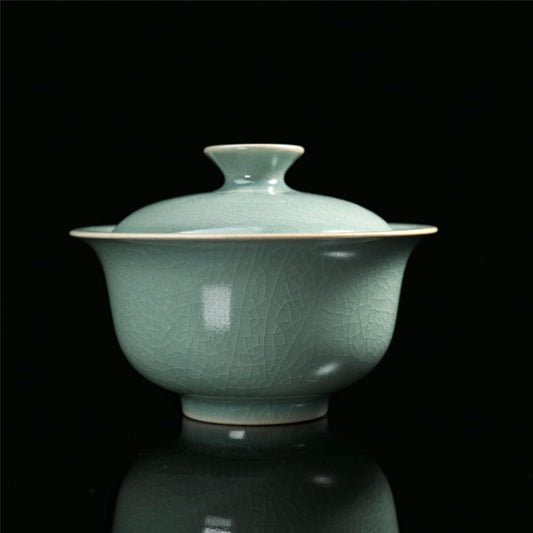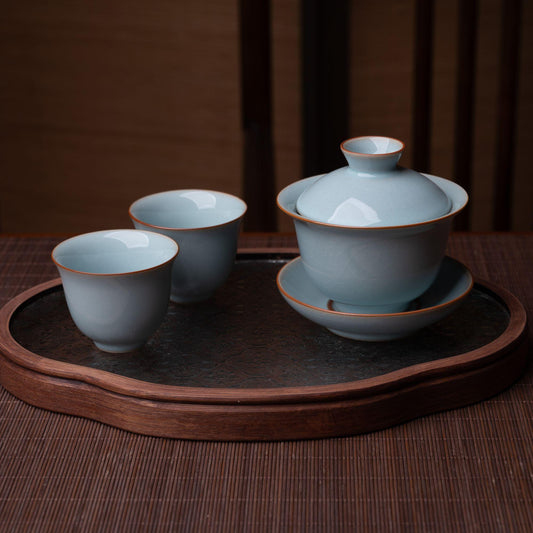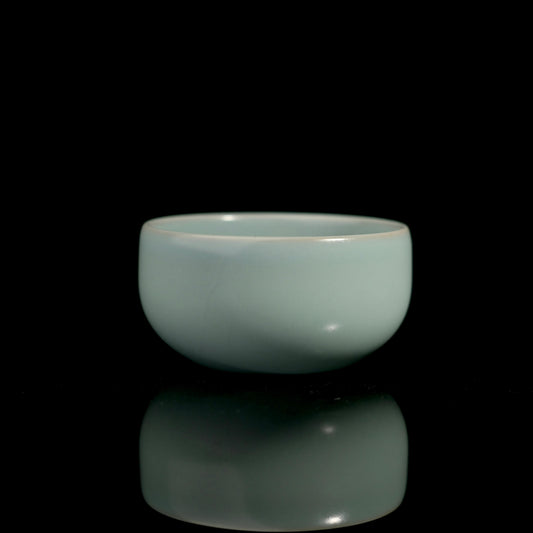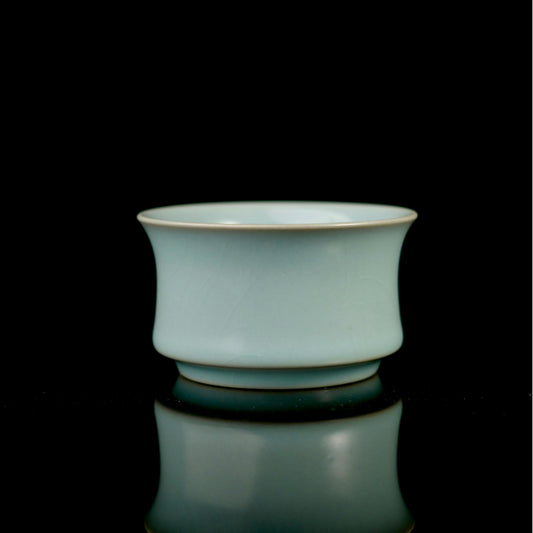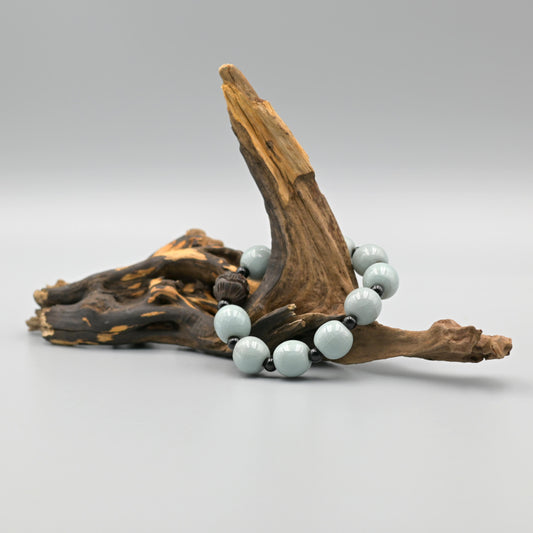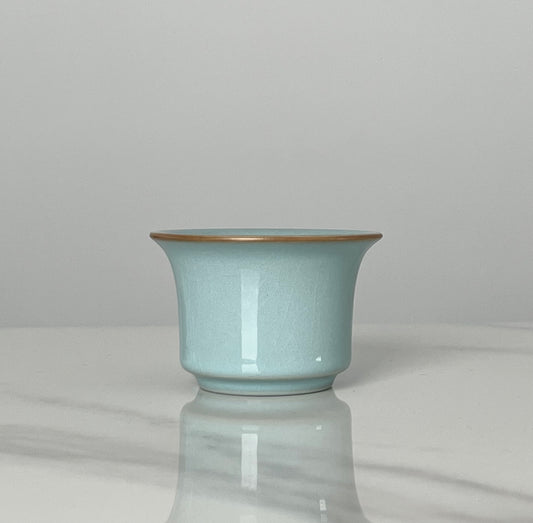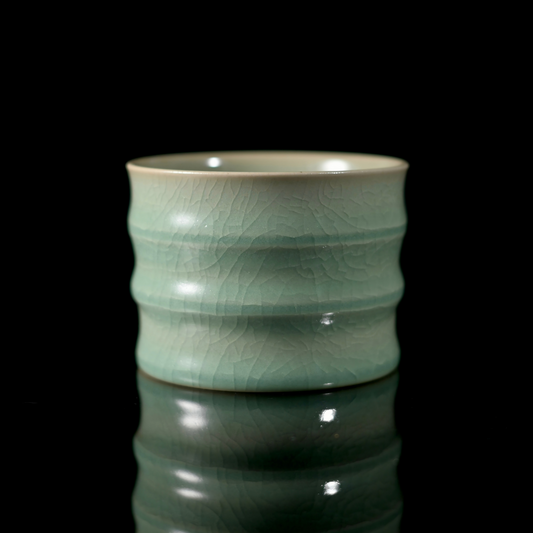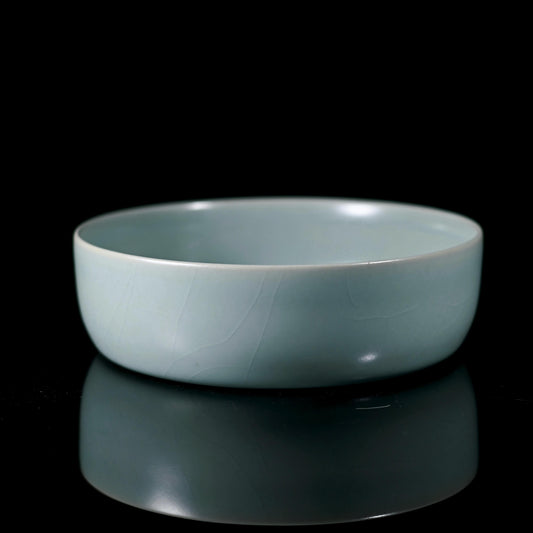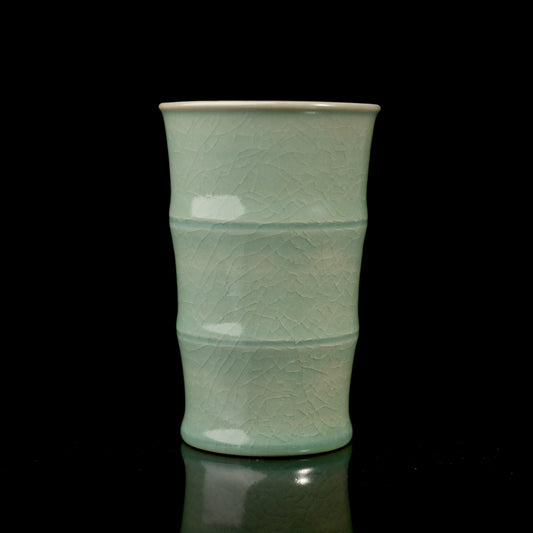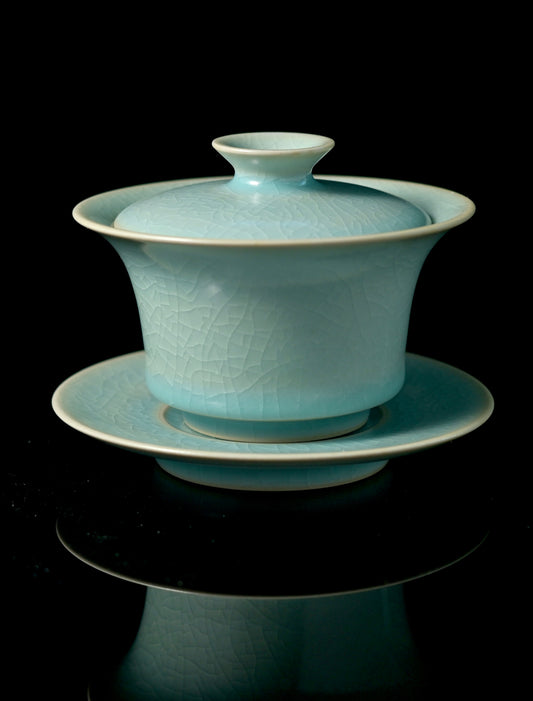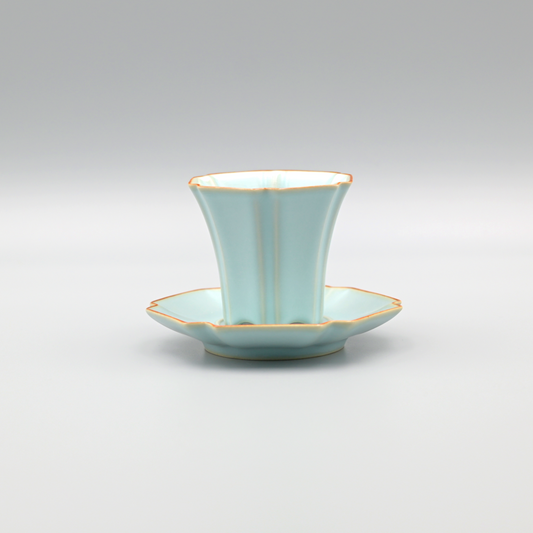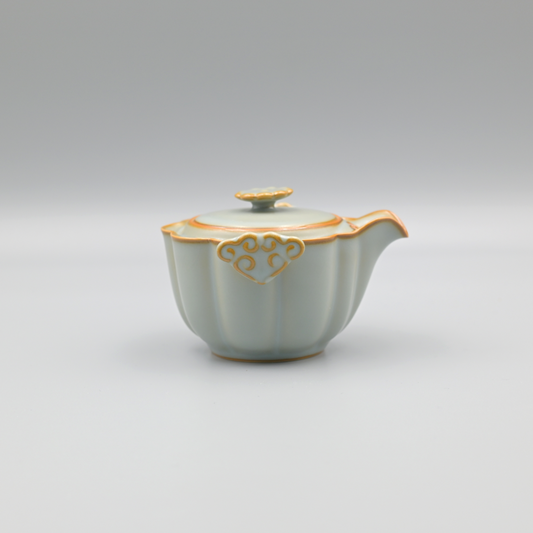
-
Ru Porcelain Gaiwan (Tea Bowl) with Crab-Claw Crackle Patterns
Regular price $119.00 USDRegular priceUnit price / per -
Ru Porcelain Gaiwan(Tea Bowl) and Teacups 3 in 1 Ru Kiln Tea Set
Regular price $115.00 USDRegular priceUnit price / per -
Unique Piece Ru Ware Sky-Blue Glaze Flower-rimmed Brush Washer
Regular price $79.90 USDRegular priceUnit price / per -
Ru Porcelain Zen Teacup
Regular price $35.00 USDRegular priceUnit price / per -
Ru Porcelain Vintage Glaze "Horse Shoe" Teacup
Regular price $35.00 USDRegular priceUnit price / per -
Ru Porcelain (Ruyao) Sky Blue Bracelet
Regular price $49.90 USDRegular priceUnit price / per -
Ru Ware Hoof-shape Teacup Underglaz Cracking Ru Kiln Teaware
Regular price $60.00 USDRegular priceUnit price / per -
Ru Ware Sky-Blue Glaze Hand-Carved Master Cup
Regular price $99.99 USDRegular priceUnit price / per -
Ru Ware Bamboo-Joint Master Cup
Regular price $19.90 USDRegular priceUnit price / per -
Ru Ware Sky-Blue Glaze Round Brush Washer
Regular price $128.00 USDRegular priceUnit price / per -
Ru Porcelain "Jade Bamboo" Cola Cup (300ml)
Regular price $39.00 USDRegular priceUnit price / per$49.00 USDSale price $39.00 USDSale -
Ru Porcelain Vintage Glaze Crackles Gaiwan / Tea Bowl
Regular price $119.00 USDRegular priceUnit price / per -
Ru Porcelain Vintage Glaze Fine Crackles Press Hand Cup
Regular price $39.90 USDRegular priceUnit price / per -
Unique Piece Ru Porcelain Archaistic Glaze Pot Saucer Vintage Sky Blue Plate / Tea tray
Regular price $150.00 USDRegular priceUnit price / per -
Ru Kiln Hexagon Host Tea Cup “Liuhe Teacup”
Regular price $39.90 USDRegular priceUnit price / per -
Gray-Blue Ru Kiln Ruyi Hand-Grip Teapot / Tea Sets
Regular price From $84.90 USDRegular priceUnit price / per
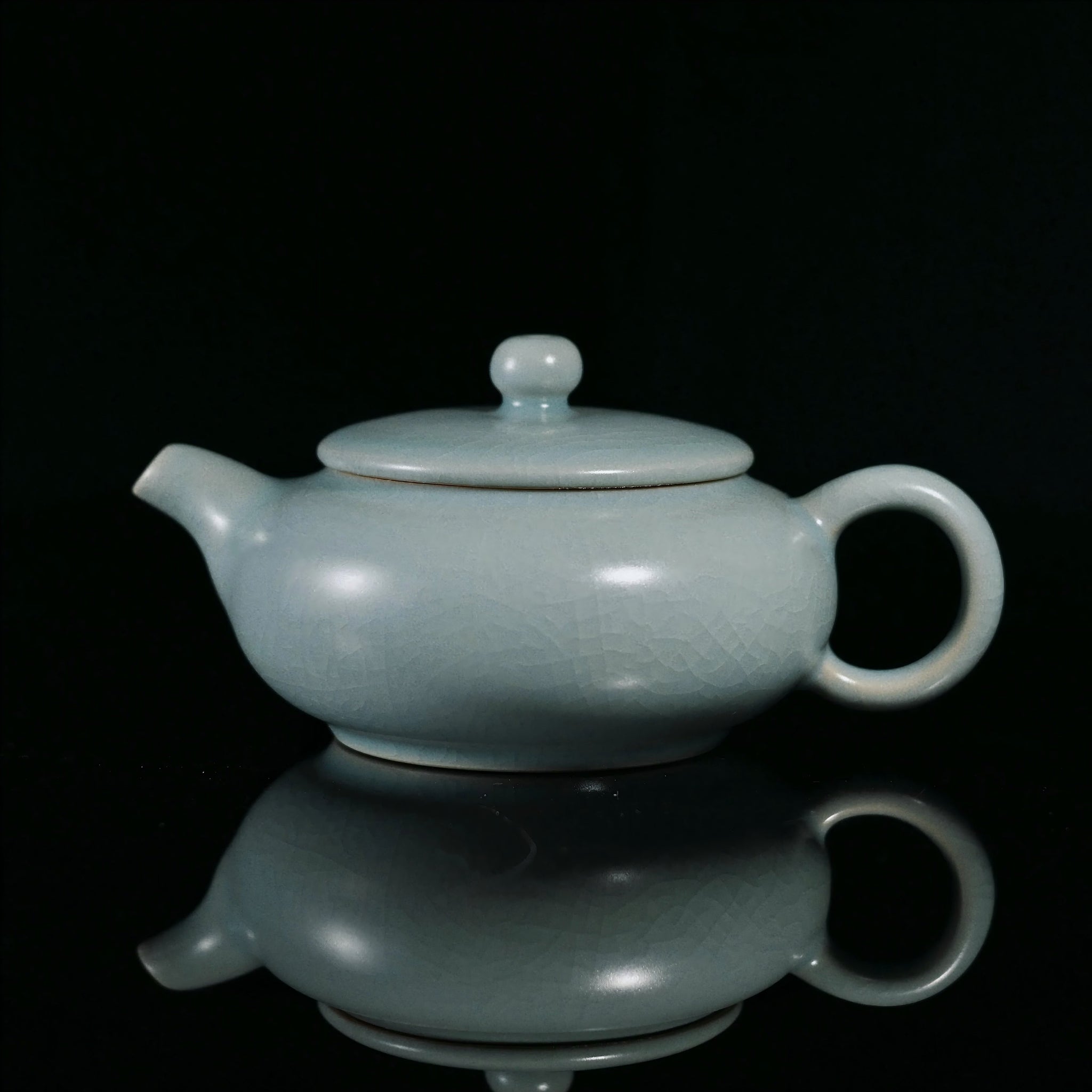
Collection: Ru Porcelain (Ruyao)
Learn More About Ru Porcelain (Ruyao)
What is Ru Porcelain?
Ru Porcelain, or Ruyao , is one of the most esteemed types of Chinese ceramics. It originated during the Northern Song Dynasty (960-1127 AD) and is famous for its smooth, jade-like glaze with a delicate network of crackle patterns that develop naturally over time.
What makes Ru Porcelain special?
Exquisite sky-blue glaze – A soft sky-blue glaze that resembles the color of the sky when rain stop and the clouds break.
- Unique crackles (Kaipian) – Natural fine lines that enhance with use.
- Soft and warm texture – Unlike ordinary porcelain, Ruyao has a silky, warm touch.
- Historical significance – Once reserved for imperial use, making it highly valued today.
What is crackles(Kaipian)?
The crackle patterns in Ru Porcelain glaze are known as "Kaipian" . Originally, this was considered a defect in pottery (commonly referred to as "crazing" in ceramic terms), but Ruyao transformed this flaw into a signature aesthetic feature. These patterns form naturally during the firing process and cannot be precisely controlled, making each piece truly unique.
Why does Ru Porcelain develop crackles?
- Kaipian occurs due to differences in expansion rates between the clay body and the glaze:
- During firing, the ceramic body and glaze shrink at different rates.
- Upon cooling, the glaze contracts more than the clay body, resulting in a network of fine cracks.
- Over time, exposure to tea and air enhances the crackles, deepening their color.
Are crackles a flaw?
No! While originally considered a defect, Ru Porcelain turned this into an artistic advantage. The fine lines give the Tea ware a unique aged appearance and allow it to develop a beautiful patina over time.
What Are the Types of Ru Porcelain Crack Patterns?
TYPES OF CRACK PATTERNS IN RU PORCELAIN
How to Care for Ru Porcelain?
Rinse with warm water after use – Avoid detergents to preserve the natural patina.
Do not soak in tea overnight – This prevents excessive staining.
Avoid extreme temperature changes – Sudden hot or cold shifts can cause further cracking

